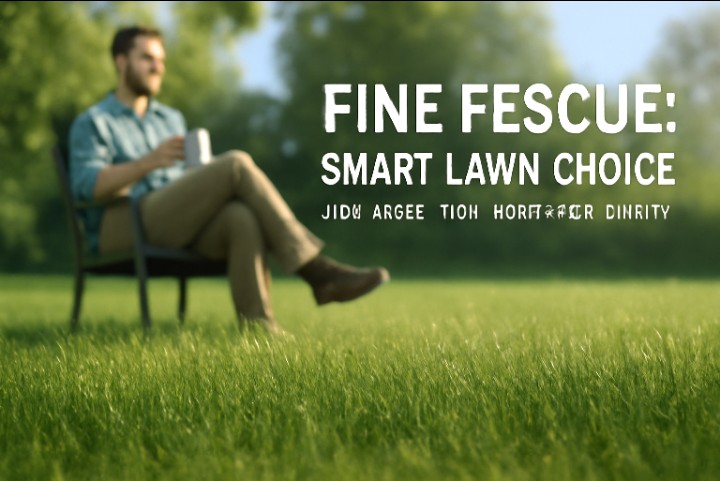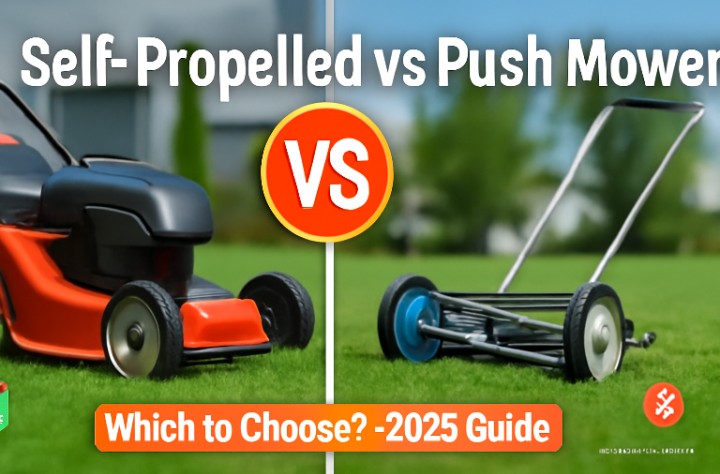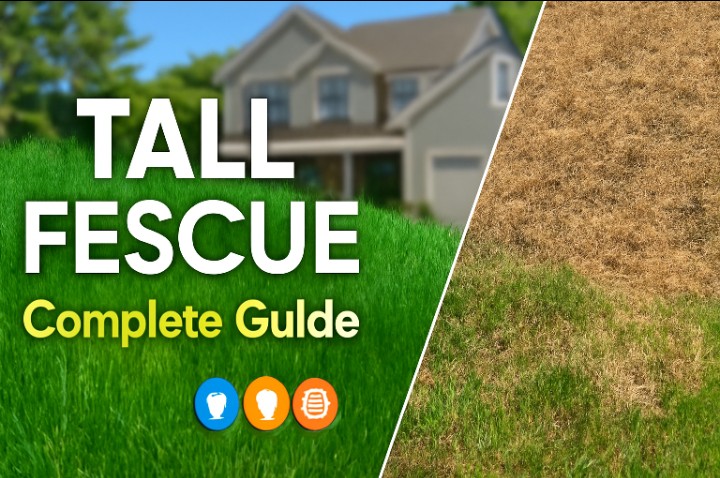Introduction: The Green Revolution in Lawn Care
Your beautiful lawn does not have to hurt the planet. 92% of homeowners are now looking for more sustainable solutions for their homes. That’s a massive shift from just a few years ago.
Traditional lawn care practices consume shocking amounts of resources. Every year across the country, lawns consume nearly 3 trillion gallons of water, 200 million gallons of gas and 70 million pounds of pesticides. These numbers tell a story that many Charlotte and Austin homeowners are starting to question.
The environmental impact goes beyond water waste. Perfect lawns can contribute to rising carbon dioxide emissions and devastate local ecosystems. But here is the good news 2025 is bringing revolutionary changes to how we care for our yards.
With growing awareness about climate change, sustainable lawn care practices are taking center stage. These methods protect your family’s health while creating gorgeous outdoor spaces. They also save money over time making this transition a win-win situation.
Understanding Sustainable Lawn Care Fundamentals
What Makes Lawn Care Sustainable?
Sustainable lawn care means working with nature instead of against it. It focuses on building healthy soil and supporting local ecosystems. Think of it as creating a partnership with your environment rather than controlling it through chemicals.
The core principles are simple. Use natural processes to feed your grass. Choose plants that thrive in your local climate. Reduce waste and conserve water. Support beneficial insects and wildlife.
Environmental impact reduction happens naturally when you follow these practices. Your soil becomes healthier over time. Local birds and butterflies return to your yard. Water runoff decreases, protecting nearby streams and lakes.
Long-term soil health is the foundation of sustainable lawn care. Healthy soil holds more water and nutrients. It produces thicker, more resilient grass that naturally resists weeds and pests.
The Cost of Traditional Lawn Care
Chemical fertilizers create multiple environmental problems. They wash into waterways, causing algae blooms that kill fish. They also destroy beneficial soil organisms that keep grass naturally healthy.
Gas powered mowers release emissions that contribute to air pollution. A single gas mower running for one hour produces the same emissions as 11 cars driving for an hour. That’s a surprising impact from such a simple task.
The carbon footprint extends beyond mowing equipment. Manufacturing and transporting synthetic fertilizers requires enormous amounts of energy. The pesticide industry alone generates millions of tons of CO2 annually.
Water consumption statistics are equally concerning. The average American lawn uses 10,000 gallons of water beyond natural rainfall each year. In drought-prone areas like Southern California and Texas, this becomes a serious sustainability issue.
Smart Watering Strategies for Water Conservation
Efficient Irrigation Systems
Smart sprinkler systems use digital technology to deliver water only where it’s needed, using precise software-based control instead of mechanical zones. This represents a major advancement over traditional sprinkler systems that water entire areas regardless of need.
Modern drip irrigation works differently than traditional sprinklers. It delivers water directly to root zones, reducing evaporation by up to 50%. This method works especially well for flower beds and vegetable gardens adjacent to lawn areas.
Tiny smart soil sensors monitor moisture, temperature and pH levels in real-time, communicating with the irrigation system to water only when necessary. These sensors prevent overwatering and ensure your grass gets exactly what it needs.
Rainwater harvesting techniques are becoming popular in cities like Portland and Seattle. Simple rain barrels collect water from gutters. More advanced systems store thousands of gallons underground for dry periods.
Drought-Resistant Landscaping
Xeriscaping principles originated in Colorado but work everywhere. The key is choosing plants that naturally thrive with minimal water. This does not mean having a desert landscape many beautiful plants are naturally drought-tolerant.
Native grass alternatives are gaining popularity across the country. Buffalo grass works well in Colorado and Kansas. Zoysia grass thrives in Georgia and the Carolinas. These grasses need 50% less water than traditional Kentucky bluegrass.
Ground cover options can replace high-maintenance lawn areas. Creeping thyme releases a pleasant fragrance when walked on. Wild strawberries produce flowers and fruit. These alternatives create visual interest while reducing water needs.
Optimal Watering Practices
Deep, infrequent watering builds stronger root systems. Water twice per week for longer periods rather than daily light sprinklings. This encourages roots to grow deeper, making grass more drought-resistant.
Rain sensors detect precipitation and automatically pause scheduled irrigation schedules, ensuring systems don’t operate during or immediately after rainfall. This simple technology can reduce water usage by 15-20% annually.
Early morning watering between 4 AM and 10 AM minimizes evaporation. Evening watering can promote fungal diseases, especially in humid climates like Florida and Louisiana. Midday watering wastes water through rapid evaporation.
Seasonal adjustments are crucial for water conservation. Spring requires less water as grass emerges from dormancy. Summer demands peak irrigation in most regions. Fall watering decreases as grass growth slows. Winter irrigation stops completely in most northern climates.
Organic and Natural Lawn Treatment Methods
Natural Fertilizers and Soil Amendments
Organic fertilizers made from natural materials feed grass slowly and steadily. Unlike synthetic fertilizers that provide quick bursts of nutrients, organic options nourish soil organisms that support long-term grass health.
Compost application improves soil structure while adding nutrients. A quarter-inch layer applied twice yearly transforms even poor soil. Compost retains moisture better than untreated soil, reducing watering needs.
Bone meal provides phosphorus for root development. Fish emulsion supplies nitrogen in a slow-release form. Kelp meal adds trace minerals often missing from synthetic fertilizers. These natural options won’t burn grass like harsh chemicals can.
Organic fertilizers nurture healthy soil and naturally thick grass, while natural feed and weed treatments build your lawn’s resistance to weed growth. This creates a positive cycle where healthier grass naturally crowds out weeds.
Chemical-Free Pest and Weed Control
Integrated Pest Management (IPM) combines biological, cultural and mechanical control methods. This holistic approach addresses pest problems at their source rather than simply killing adult insects.
In the organic approach to lawn care, synthetic chemicals are not used to manage pests. Cultural practices and biological options are used when available. This might seem challenging initially but results in healthier long-term pest control.
Natural weed suppression starts with thick, healthy grass. Dense lawns naturally prevent weed seeds from germinating. Proper fertilization and watering create conditions that favor grass over weeds.
Biorational lawn pest controls affect insects by deterring feeding, preventing maturation or disrupting molting. These methods target specific pest problems without harming beneficial insects like bees and butterflies.
Soil Health Improvement
Soil testing reveals exactly what your lawn needs. Most university extension offices provide testing services for $10-20. Results show pH levels and nutrient deficiencies that guide your fertilization program.
pH management affects nutrient availability. Most grasses prefer slightly acidic soil between 6.0-7.0. Lime raises pH in acidic soils. Sulfur lowers pH in alkaline soils. Proper pH allows grass to absorb nutrients efficiently.
Aeration alternatives include liquid soil conditioners and beneficial microorganisms. These biological approaches gradually improve soil structure without the disruption of mechanical core aeration.
Mycorrhizal fungi create symbiotic relationships with grass roots. These beneficial fungi extend root networks, improving water and nutrient uptake. Many organic fertilizers now include mycorrhizal inoculants.
Sustainable Mowing and Equipment Practices
Eco-Friendly Mowing Equipment
Electric mowers have revolutionized sustainable lawn care. Gas powered mowers release emissions, but electric models produce zero direct emissions. Battery technology now provides runtime comparable to gas mowers for most residential properties.
Manual reel mowers work perfectly for smaller lawns under half an acre. They are quiet, require no fuel or electricity and provide excellent exercise. Modern reel mowers cut cleaner than rotary mowers, promoting healthier grass.
Battery-powered tools now include mowers, trimmers and blowers. A single battery system can power multiple tools, reducing equipment costs. Lithium batteries last 3-5 years with proper care, making them cost-effective long-term.
Sustainable Mowing Techniques
Grasscycling means leaving clippings on the lawn after mowing. These clippings decompose quickly, returning nitrogen to the soil. This natural fertilizer can reduce fertilizer needs by 25%.
Proper mowing height varies by grass type but generally means cutting no more than one-third of the blade length. Taller grass develops deeper roots and naturally shades out weeds. Most cool-season grasses should be cut to 3-4 inches.
Reduced mowing frequency saves time and energy while supporting biodiversity. Allowing grass to grow slightly longer between cuts provides habitat for beneficial insects. This approach works especially well in spring when grass growth is rapid.
Native Plants and Biodiversity Enhancement
Incorporating Native Species
Regional native grass varieties evolved to thrive in local conditions. They require less water, fertilizer and pest control than non-native alternatives. Native grasses also support local wildlife better than traditional turf species.
Clover fixes nitrogen naturally, reducing fertilizer needs. White clover stays green longer than grass during dry periods. It also produces flowers that feed pollinators. Many homeowners are rediscovering the benefits of clover lawns popular before the 1950s.
Pollinator-friendly additions create habitat for declining bee and butterfly populations. Native wildflowers can be incorporated into lawn areas or planted as borders. These plants require minimal care once established.
Creating Wildlife-Friendly Spaces
Bird habitat requires food, water and shelter. Native plants provide seeds and insects that birds need. Water features like shallow dishes or small fountains attract various bird species. Shrubs and trees offer nesting sites.
Butterfly gardens need both nectar plants for adults and host plants for caterpillars. Native milkweed supports monarch butterflies. Purple coneflower and black-eyed Susan provide nectar for many species.
Beneficial insects like ladybugs and lacewings help control pest populations naturally. Diverse plantings that bloom throughout the growing season support these helpful insects. Avoiding pesticides protects beneficial species.
Seasonal Sustainable Lawn Care Calendar
Spring Preparation
Natural lawn awakening begins with gentle raking to remove winter debris. Avoid walking on wet soil to prevent compaction. Early spring is ideal for overseeding thin areas with appropriate grass varieties.
Organic pre-emergent applications use corn gluten meal to prevent weed seeds from germinating. Apply 4-6 weeks before weeds typically emerge in your area. This natural approach requires precise timing for effectiveness.
Soil preparation focuses on adding organic matter rather than synthetic inputs. Compost, aged manure or leaf mold improve soil structure. Light topdressing in spring helps grass recover from winter stress.
Summer Maintenance
Heat stress management involves proper watering and mowing practices. Automatic sprinkler systems operate on schedules, ensuring lawns get watered even when you’re not home. Deep, infrequent watering encourages deep root growth.
Water-efficient irrigation systems minimize waste during peak summer demand. Smart controllers adjust watering based on weather conditions and soil moisture levels.
Natural cooling strategies include maintaining taller grass height and using mulch around landscape plants. Shade from trees reduces lawn temperature and water needs. Strategic tree planting provides long-term cooling benefits.
Fall Recovery and Winter Prep
Fall is the best time for overseeding cool-season grasses. Soil temperatures remain warm while air temperatures moderate. This combination promotes rapid germination and establishment before winter.
Natural winterization focuses on lawn health rather than harsh treatments. Final mowing should leave grass slightly taller than summer height. This provides insulation and prevents snow mold in northern climates.
Equipment maintenance extends tool life and ensures spring readiness. Clean mower decks prevent rust. Sharpen blades for clean cuts. Store batteries properly to maintain capacity. These steps save money and reduce waste.
Technology and Innovation in Sustainable Lawn Care
Smart Lawn Care Apps and Software
Weather integration prevents systems from watering when rain is in the forecast, preventing waste and lowering water bills. Modern apps connect local weather data to irrigation schedules automatically.
Soil monitoring technology provides real-time data about moisture, temperature and nutrient levels. This information helps optimize watering and fertilization schedules. Some systems send smartphone alerts when action is needed.
Organic treatment tracking helps maintain consistent care schedules. Apps can remind users when to apply compost or organic fertilizers. This prevents over-application and ensures treatments occur at optimal times.
Robotic and Automated Solutions
Solar-powered robotic mowers operate quietly and efficiently. They cut grass frequently, creating fine clippings that decompose quickly. Most models return to charging stations automatically when batteries run low.
Automated composting systems speed decomposition of yard waste. These units maintain proper moisture and temperature for rapid composting. Fresh compost can be ready in 6-8 weeks instead of months.
Smart controllers detect problems before they become visible, alerting users to unusual water usage patterns that might indicate leaks. This early warning prevents landscape damage and water waste.
Cost-Benefit Analysis of Sustainable Practices
Initial Investment vs Long-term Savings
Electric mowers cost $200-800 initially but eliminate ongoing fuel costs. Battery replacements every 3-5 years cost $50-150. Gas mowers require annual maintenance and fuel that often exceeds electric mower battery costs.
IoT (Internet of Things) based irrigation systems have reduced energy use by up to 30%. Smart controllers cost $100-300 but can reduce water bills by 20-50% annually. Payback periods typically range from 2-4 years depending on local water costs.
Organic fertilizers cost more per application than synthetic alternatives. However, they improve soil health over time, reducing total fertilizer needs. Many homeowners find they can reduce fertilizer applications by 50% after 2-3 years of organic care.
Property Value and Aesthetic Benefits
Sustainable landscaping increases property values in environmentally conscious markets. Native plantings and water-wise gardens appeal to many buyers. Established organic lawns often look healthier than chemically treated alternatives.
Long-term lawn health improves with sustainable practices. Organic soil amendments create deeper root systems and better drought tolerance. These lawns recover more quickly from stress and maintain color longer.
Reduced maintenance requirements develop over time as soil health improves. Healthier grass naturally resists pests and diseases. This reduces the need for treatments and creates more predictable maintenance schedules.
Common Challenges and Solutions
Transition Period Management
Switching to sustainable methods requires patience. Soil biology takes 1-2 seasons to adjust to organic inputs. Grass may look slightly different initially as it adapts to new feeding schedules.
Visible improvements typically appear within one growing season. Soil structure improves gradually over 2-3 years. Deep root development and natural pest resistance develop as soil health stabilizes.
Managing family expectations involves education about sustainable goals. Children and pets benefit from chemical-free lawns immediately. Explaining long-term benefits helps family members understand temporary aesthetic changes.
Regional Considerations
Climate-specific practices vary significantly across the country. Desert Southwest regions focus on water conservation and heat tolerance. Pacific Northwest areas emphasize managing moss and heavy rainfall.
Local regulations may restrict certain practices or require others. Some municipalities mandate water conservation during droughts. Others prohibit pesticides near water sources. Research local rules before implementing new practices.
HOA compliance can be challenging with sustainable practices. Some associations require specific grass types or appearance standards. Educating HOA boards about sustainable benefits often leads to policy updates.
DIY vs Professional Sustainable Lawn Care
What Homeowners Can Handle
Simple organic treatments like compost application require no special skills. Spreading granular organic fertilizers works similarly to synthetic products. Most homeowners can manage basic sustainable practices independently.
Basic equipment transitions are straightforward. Electric mowers operate similarly to gas models. Battery-powered trimmers and blowers require minimal learning. Most sustainable equipment is actually easier to maintain.
Seasonal maintenance tasks follow predictable patterns. Spring soil preparation and fall overseeding occur at specific times. Summer watering adjustments respond to weather patterns. Winter equipment storage protects investments.
When to Call Professionals
Professional landscape designers help select the best native plants, install efficient irrigation systems and implement eco-friendly maintenance practices tailored to your home. Complex projects benefit from professional expertise.
Soil issues like extreme pH problems or compaction often require professional assessment. Testing labs provide detailed analysis and recommendations. Professional treatment ensures proper application rates and timing.
Large-scale transitions involving significant landscape changes need professional planning. Installing new irrigation systems requires permits in many areas. Professional installers ensure code compliance and optimal performance.
The Future of Sustainable Lawn Care
Emerging Trends for 2025
New organic treatments continue developing as research progresses. Biostimulants enhance plant stress tolerance and nutrient uptake. These products work with natural plant processes rather than replacing them.
Advanced water conservation technologies are becoming more affordable. Atmospheric water generators create irrigation water from air humidity. Subsurface irrigation systems eliminate evaporation completely.
Climate change adaptation strategies focus on resilience building. Heat-tolerant grass varieties handle rising temperatures better. Drought-resistant landscaping becomes standard in water-limited regions.
Community and Policy Impact
Municipal sustainable lawn care initiatives are spreading nationwide. Some cities offer rebates for organic lawn conversions. Others provide free compost or rain barrels to residents. These programs accelerate sustainable adoption.
HOA policy changes reflect changing homeowner preferences. Many associations now allow native plants and vegetable gardens. Some actively promote sustainable practices through education programs.
Community education programs help homeowners learn sustainable techniques. Extension offices offer workshops and demonstrations. Master Gardener programs provide ongoing support and troubleshooting assistance.
Taking the First Steps
Start with simple changes that provide immediate benefits. Replace synthetic fertilizers with organic alternatives. Adjust mower height to promote deeper roots. These basic steps begin soil improvement immediately.
Create a personal transition timeline based on your budget and goals. Year one might focus on eliminating chemicals. Year two could add smart irrigation. Year three might include native plant installation.
Prioritize changes by environmental impact and cost savings. Water conservation typically provides the fastest payback. Organic fertilizers improve long-term soil health. Equipment changes last longest but require higher initial investment.
Additional Resources
Extension offices provide region-specific guidance for sustainable lawn care. Most offer soil testing services and plant recommendations. Many have demonstration gardens showing sustainable techniques.
Online communities share experiences and troubleshooting advice. Social media groups connect homeowners with similar goals. Local gardening clubs often focus on sustainable practices.
Professional organizations like the Ecological Landscaping Association maintain directories of sustainable service providers. These resources help homeowners find qualified professionals for complex projects.
Sustainable lawn care is not just about being environmentally responsible. it’s about creating beautiful, healthy outdoor spaces that work with nature instead of against it. The methods outlined here will help you achieve both goals while saving money and protecting your family’s health.






